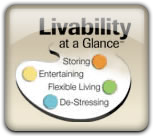Why Buy New And Not Used

It used to be that new homes cost more than older homes, but that's not true across the board anymore. As land costs increase, the size of new home lots have shrunk. Especially in California. One can practically crawl a bedroom window and into the window of the home next door. Homes are that close in proximity.
Another reason today's construction is cheaper is because it's less expensive to use 2 x 4 pine framing or engineered wood over 2 x 6 redwood and to use drywall instead of plaster. Buyers who look at inner-city homes in desirable neighborhoods will find, on average, larger lot sizes, and the homes will cost more than entry-level new homes being developed in new subdivisions outside the city.
Here are advantages and disadvantages to consider when trying to determine whether you should buy a newer home or an older home.
Advantages to Buying an Older Home
- Old world construction.
Older homes have stood for decades, some centuries, and weathered many storms. Some were built by hand by genuine craftsman, with meticulous attention to detail. - Larger yard.
Years ago, when land was cheaper, builders built on larger lot sizes, leaving room to accommodate garages on alleys. - More character.
Craftsman bungalows originated in California in the 1890s, but now they're ubiquitous across the U.S. Other popular styles are Victorians, Greek Revivals, Tudors or Colonials. Interesting architectural features are abundant in these homes such as arches, hand-carved decorative appointments, stained-glass windows. - Longer-term neighbors.
Some older homes are passed down through generations. Many neighbors know each other. - Established neighborhood.
Zoning changes are unlikely to occur in older areas. Hooters restaurants don't fare well in residential. - Mature trees and vegetation.
It's not uncommon to see 100-year trees providing canopies in yards and boulevards. - Closer to downtown entertainment and restaurants.
Not only do older areas tend to be located closer to downtown areas, but often residents can walk to local coffeehouses and antique stores.
Drawbacks to Buying an Older Home

- More maintenance.
If it were a "perfect" house, everything would fall apart at the same time. But things tend to go wrong periodically, and there's always something to fix. Chimneys and stone foundations require tuckpointing. Floors may slope. - Expensive to replace wiring and plumbing.
If a home was built before sewer systems, the cesspool might overflow into a sewer. Tree roots break up sewer pipes. Galvanized pipes are rust-prone. Sensitive electronics require grounded wiring, and Romex can't be mixed with knob and tube. - Smaller closets, storage space, garages.
Before today's concept of "bigger is better," people had less clothing, fewer personal items to store and one car. Live Well Custom Homes builds homes with livability in mind! - Might require updates.
Apart from HVAC systems -- I don't know how those in hot climates get by without central air -- trendy updates involve pricey kitchen and bath remodels. - Often more expensive.
Classic and vintage homes generally cost more because of the location, meaning closer to conveniences such as schools, mass transit, shopping and urban amenities. - Smaller square footage on average.
With the exception of estates, many older homes are smaller in size, even though family sizes were larger when they were built.
Advantages to Buying a Newer Home
- Little maintenance.
New construction is meant to last for a while, so new home owners are not likely to install a new roof or replace the water heater. - Modern conveniences.
Many items are standard such as built-in dishwashers, refrigerators, microwaves and wine coolers; they feature master suite baths, work-out and media rooms; wiring systems are networked. - Builder's warranty.
In California, builders are required to give buyers a 10-year warranty. The first line of defense is to buy from a reputable builder who will agree to stand behind the structure and its components. - Energy efficient.
Many homes are built with solar panels that can turn back the electric meter. New appliances use less energy. Walls, ceilings and floors are insulated. Dual pane windows retain more heat in winter and keep the home cooler in summer. - Built to code.
Code regulations change all the time. Consumer safety issues are continually addressed in new construction and conform to building codes. - Emotional factor of newness.
Let's face it, there's nothing like owning something that's brand new, never been used, whether it's a car or a home. - Less expensive.
If the new home is not custom, it's likely to cost much less per square foot than an older home in the city. - Greater square footage, on average.
It's typical to see two bedroom homes with 1,000 square feet sell for the same as a two-story, 2,500 square foot home in the suburbs. When builders can't build out, they build up.
Drawbacks to Buying a Newer Home

- Tract homes have similar floor plans.
Some say tract homes are identical to each other; they have no individuality. Others prefer conforming areas. So what if your neighbor's house look just like yours, at least you know where the light switches are located. - Immature vegetation.
It can take years for trees to grow. In the Natomas suburb of Sacramento, for example, many home owners can't afford to landscape the back yard. The front of these Mediterranean homes look magnificent, but look out an upstairs' window and everybody's lawn is dirt. - House settling.
New houses settle. It happens everywhere, regardless of the type of soil. Settling causes cracks in foundations, walls and door frames. - Longer commuting distances to downtown.
If you want to be where the action is in a metropolitan downtown area or avoid the drive to work in rush-hour city traffic, the distance from downtown might make a difference to you.
Written by Elizabeth Weintraub from About.com
"What do I do if I want to design my own home?"
Get the answer!
View our homes for sale in Macomb, Michigan
















